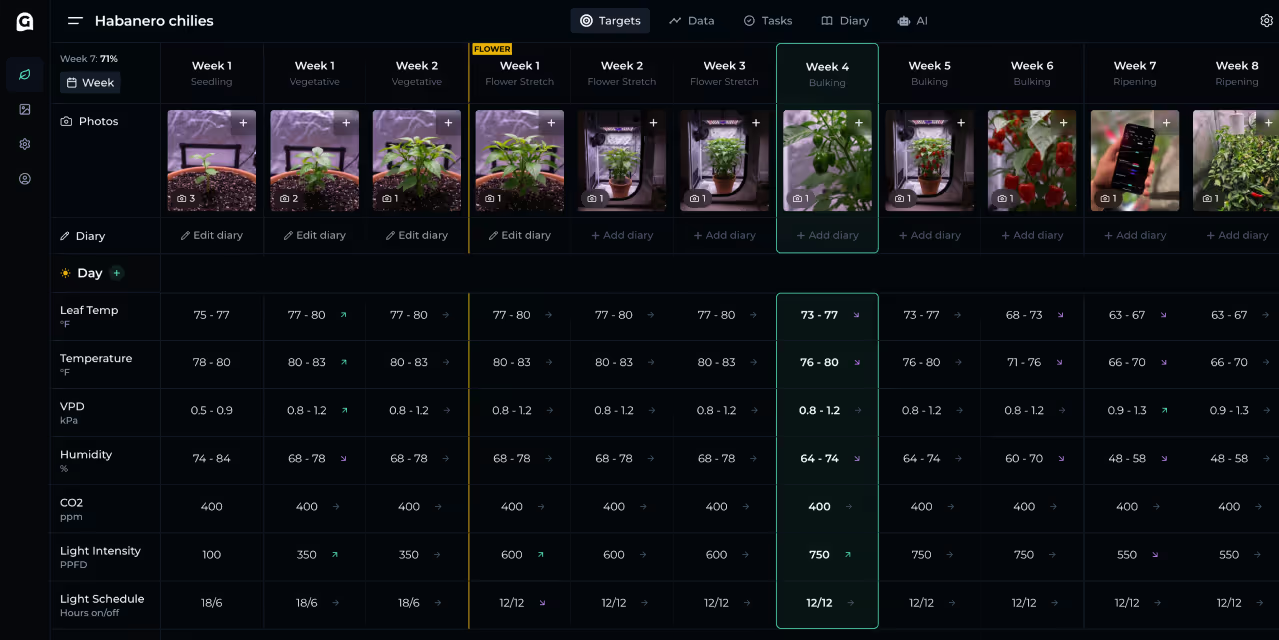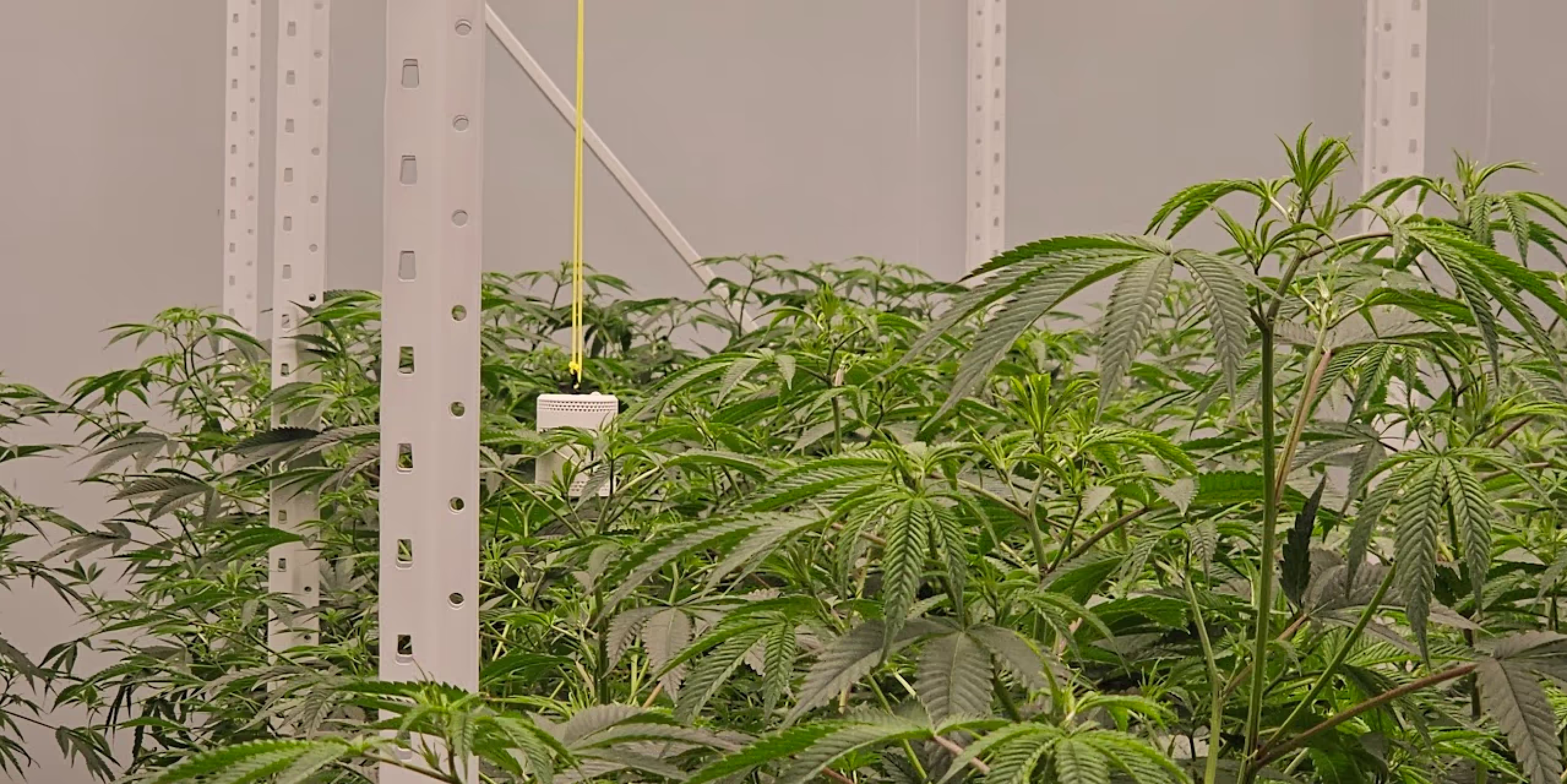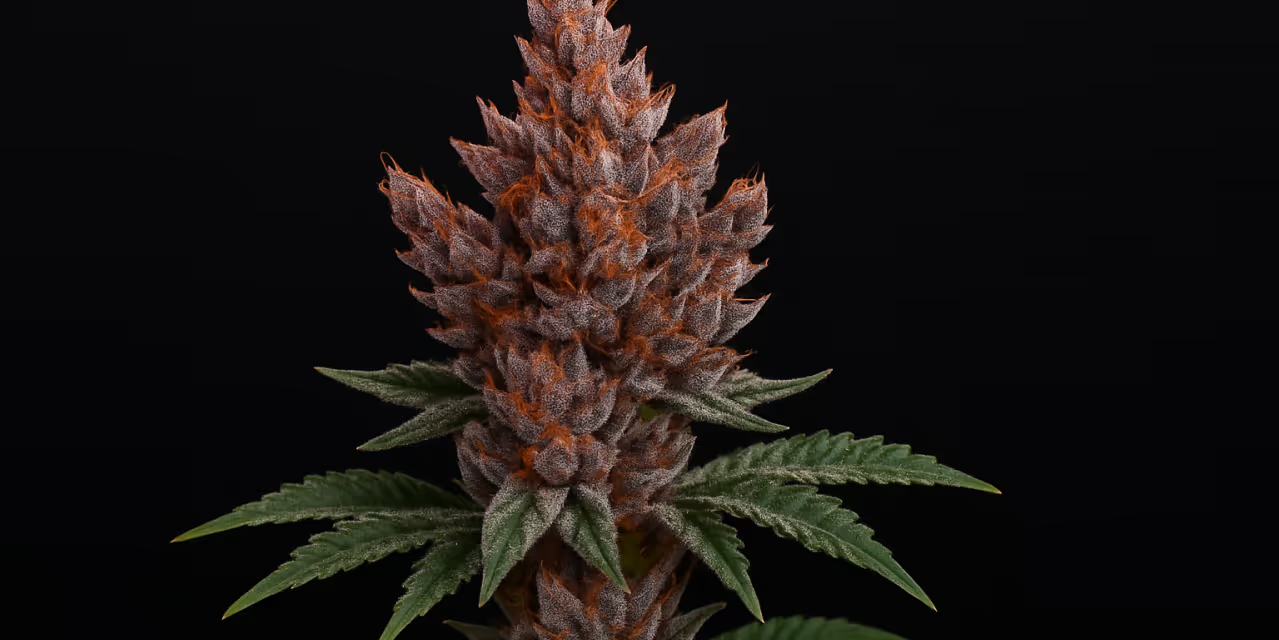Tobacco mosaic virus: Cannabis growers beware!

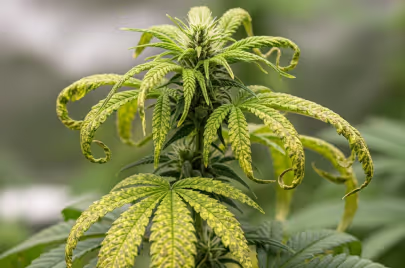
Tobacco mosaic virus is a silent destroyer, capable of slashing your cannabis yields by up to 50%.
If you're a grower seeking solutions to unexplained plant issues or keen to prevent future heartache, you've come to the right place.
This pervasive virus, if left unchecked, can devastate your entire crop.
This guide provides expert insights into identifying, preventing, and managing tobacco mosaic virus, equipping you with the crucial knowledge you need to protect your precious plants.
Disclaimer: Any information given on this site is for educational purposes only. Please ensure if you’re growing cannabis, you’re doing so by the law and subject to appropriate permissions and licenses of the applicable country.
What is tobacco mosaic virus?
In simple terms, it's a highly stable plant virus belonging to the Tobacco mosaic virus genus.
This particular virus holds a special place in scientific history because of some fascinating facts about tobacco mosaic virus:
- It was actually the first virus ever discovered, way back in the late 19th century!
- It's a microscopic entity, essentially just a strand of nucleic acid wrapped in a protective protein coat.
While its name points to tobacco plants, this specific plant virus is a bit of a generalist when it comes to who it can infect.
It boasts a remarkably wide host range, meaning it can jump to and thrive in many plant species.
In addition to tobacco plants, it causes issues in common garden favourites like tomato and pepper plants, various tomato plants, and numerous other plants across different plant families.
Understanding its broad reach is vital, as it highlights why cannabis tobacco mosaic virus is a very real possibility, not just a theoretical one.
Identifying cannabis tobacco mosaic virus symptoms on cannabis plants
Its impact on cannabis plants can be pretty distinctive, once you know what to look for.
Recognising the tobacco mosaic virus symptoms early is paramount for protecting your crop.
As its name suggests, the most characteristic visual sign is a distinct mosaic pattern on the leaves.
You'll typically see patches of dark green interspersed with lighter green or even yellow stripes.
It's almost like the leaf tissue has been pieced together from different shades, giving it that patchy, mottled look.
Beyond this classic mosaic pattern, you might also notice other leaf deformities.
Look for irregular yellow spots, unusually twisted leaves, or generally malformed leaves that just don't look right.
Beyond the foliage, the virus can severely impact the overall development of your plants.
You might observe general stunted growth and a noticeably slow growth rate for the entire plant.
This insidious virus doesn't just make your leaves look odd; it fundamentally impairs the plant's ability to photosynthesise and grow effectively, ultimately leading to significant growth and reduced yields.
It's crucial to distinguish tobacco mosaic disease on cannabis from other issues.
Sometimes, nutrient deficiencies or less than ideal environmental conditions can cause visual cues that might seem similar at first glance.
However, the specific mosaic pattern and the way the disease progresses are usually telling signs of the virus.
Be aware that infected plants might display symptoms quite early on, sometimes even in the early stages of growth, or it could take a few weeks for the tell-tale signs to become apparent.
Want to grow like a pro? Subscribe to the Grow The Best newsletter!

How is tobacco mosaic virus transmitted?
The most critical point to grasp is that direct contact is the primary mode of spread.
Insects don't spread this virus in the same way some other plant diseases are; it's mostly about physical transfer.
Let's delve into the main causes of tobacco mosaic virus in your grow space.
One of the biggest culprits is contaminated hands.
If you handle tobacco products (like cigarettes or rolling tobacco) and then touch your cannabis plants without washing your hands thoroughly, you could easily be carrying the virus and inadvertently transferring it.
This is a common and often overlooked way of spreading the virus.
Beyond your hands, contaminated tools are another major vector.
Tools like pruning shears, scissors, or even trellising materials used on contaminated plants can easily transmit the virus to healthy plant tissue elsewhere in your crop.
Similarly, plant debris from infected plants can harbour the virus for extended periods.
If you leave infected plant tissue lying around, the virus can persist and become a source of future infection.
Even contaminated soil can pose a risk, as the virus is incredibly resilient and can remain viable in the soil for a long time.
While less common for TMV, it’s worth mentioning that potential (though rare) transmission can occur via seeds or the seed coat, so sourcing is always important.
The virus primarily infects leaves and outer cells through microscopic wounds that occur naturally during handling, pruning, or even just general contact between plants, infecting other different plants nearby.
This high transmissibility is why strict hygiene is so crucial.
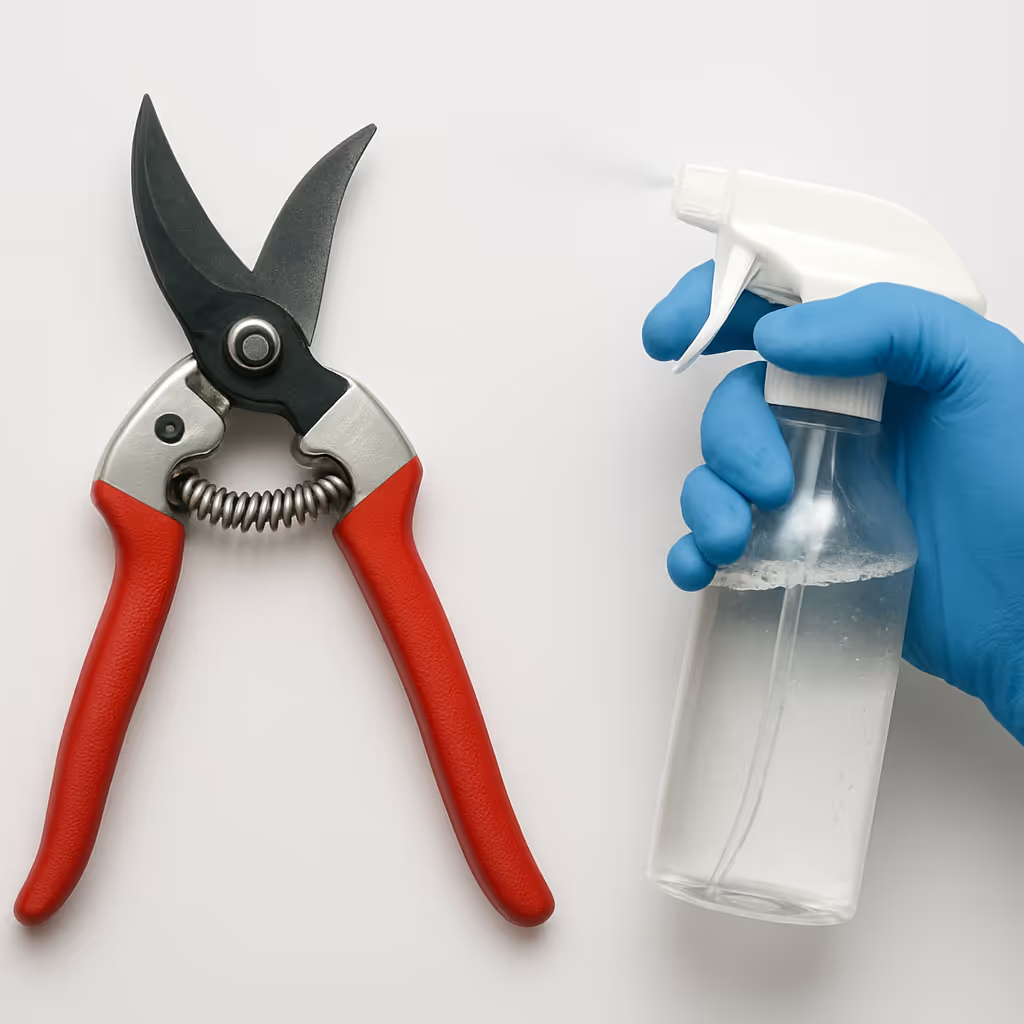
How to prevent tobacco mosaic virus in your grow room
Knowing how to prevent tobacco mosaic virus is paramount, as once your cannabis has this virus, there's no going back.
Proactive measures are your best, and frankly, your only real defence against tobacco mosaic virus TMV.
The cornerstone of preventing the spread is implementing strict hygiene protocols.
Firstly, always wash your hands thoroughly with soap and water before and after handling any of your cannabis plants.
If you happen to use tobacco products, this step is even more critical; you could unknowingly be carrying the virus and transferring it from your hands directly to your sensitive plants.
Secondly, make sure to sanitise all your tools. This includes pruning shears, scissors, and any other equipment that comes into contact with your plants.
You can use a dilute bleach solution or rubbing alcohol. Be particularly diligent with tools that have touched affected plants or even potentially infected plants.
Another key aspect is proper sanitation of your grow space. Regularly clean and disinfect surfaces in your grow room and any greenhouse structures.
Immediately remove and properly dispose of any plant debris, especially if you suspect it might be infected with this mosaic virus. This minimises the chance of the virus persisting in the environment.
Vigilance pays off when it comes to sourcing new additions to your cultivation. Always aim to purchase virus-free plants and healthy seeds from reputable suppliers.
While truly resistant varieties to tobacco mosaic virus TMV in cannabis plants aren’t widely available, some host plants might exhibit more tolerance to certain plant viruses.
If you're dealing with a specific variety of cannabis plants, researching their susceptibility to various cannabis viruses is a good idea.
Keep an eye out for other common plant viruses, such as cannabis mosaic virus, hemp streak virus, cannabis cryptic virus, or lettuce chlorosis virus, which can also impact hemp plants and other crops.
These, much like tobacco mosaic virus, can also cause stunted growth and significant issues.
Consider quarantining any new plants, including hemp plants, for a few weeks to observe for any tell-tale signs of disease before introducing them to your main cultivation area.
Even minute amounts of the virus in the seed coat could be enough to start an infection.
This approach helps you safeguard your existing plants from potential external threats, including issues like hop latent viroid, which, while different from TMV, also poses a significant threat to cannabis.

Tobacco mosaic virus treatment
Now, let's address tobacco mosaic virus treatment.
Here’s the blunt truth: there is no true "cure" once a plant has a systemic infection from this incredibly persistent virus.
Unfortunately, this is typical for most virus diseases that affect plants. Once the tobacco mosaic virus has established itself throughout the plant's system, you can't simply spray something on it to make it better.
Therefore, the treatment for tobacco mosaic virus shifts entirely from curing to managing and containing the outbreak to protect your other plants.
If you identify cannabis with TMV or any other infected cannabis plants, the immediate and most crucial step is their prompt removal and destruction.
This might seem drastic, but it's essential to prevent the spread of the virus to healthy neighbours.
Do not compost infected plants; the virus is incredibly tough and can survive in compost. Incineration or secure disposal is best.
It's important to understand that using growth regulators, specific fertilisers, or other chemical "cures" will not eliminate the TMV infection.
Such approaches are ineffective against this type of mosaic virus and could potentially stress your plants further.
Similarly, don't confuse viral symptoms with mineral excesses.
At the same time, they can sometimes appear similar, but the distinct mosaic pattern and other specific deformities of tobacco mosaic virus symptoms will usually set them apart.
The best approach for infected plants remains isolation and elimination.
Takeaways
In summary, tobacco mosaic virus TMV poses a genuine and formidable threat to your cannabis plants.
While its name might suggest otherwise, this highly contagious virus can severely impact your yields and the overall health of your cultivation.
The most critical takeaway is that prevention, not cure, is your ultimate strategy.
By diligently implementing strict sanitation practices, always washing your hands, regularly cleaning your grow room and tools, and carefully managing plant debris, you significantly reduce the risk of this virus taking hold.
Furthermore, sourcing healthy seeds and purchasing virus-free plants is vital in safeguarding your crops.
Be vigilant. Inspect your plants regularly for unusual signs of disease, like a distinct mosaic pattern or stunted growth, and act swiftly if you suspect a tobacco mosaic virus outbreak.
Your proactive efforts will ensure your plants remain vibrant and productive, helping you cultivate truly healthy plants and enjoy bountiful harvests.
Happy growing!
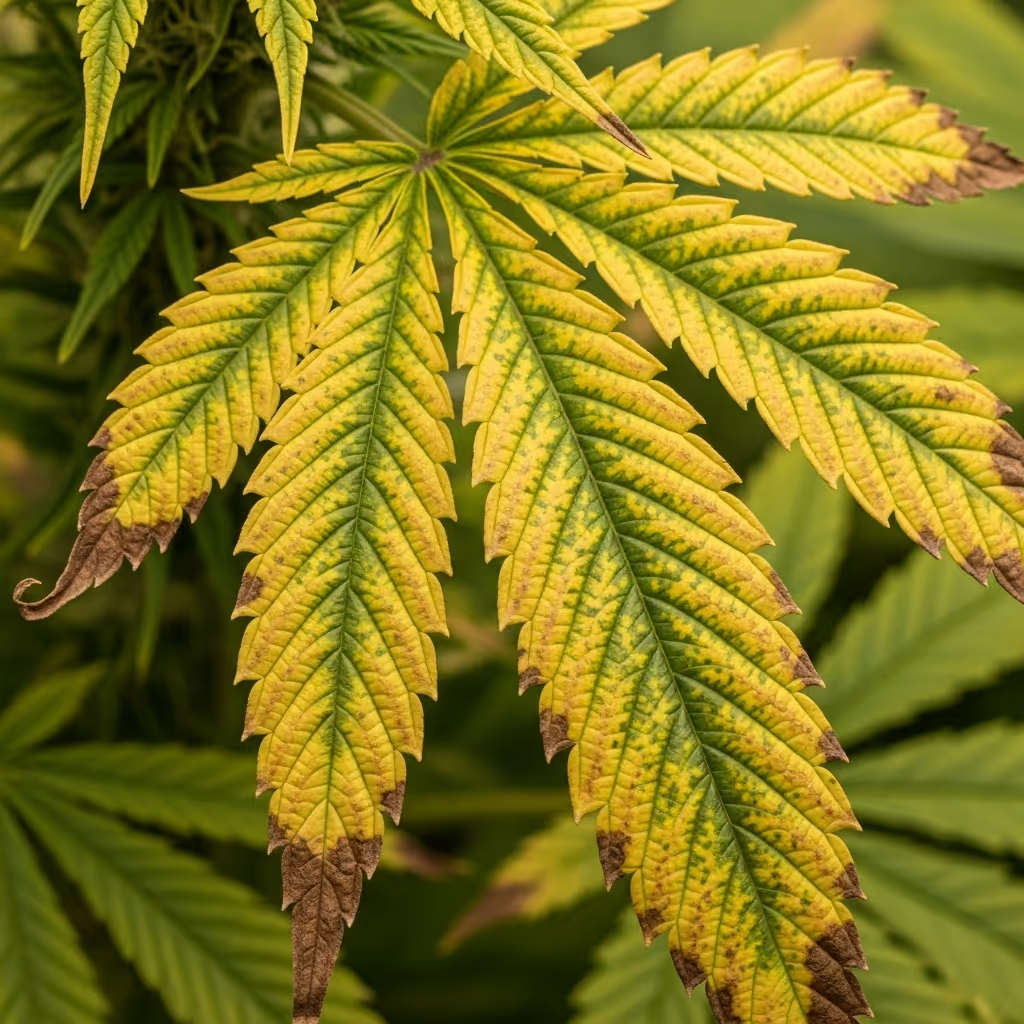
FAQs
Does the tobacco mosaic virus affect cannabis?
Yes, the Tobacco Mosaic Virus (TMV) can indeed affect cannabis.
It's a significant concern for cannabis growers as it can lead to stunted plant growth and reduced yields in cannabis plants.
There are many different types of plant viruses, and others, like cucumber mosaic virus or alfalfa mosaic virus, also exist and can affect other crops, though they might not directly threaten your cannabis in the same way.
How to treat tobacco mosaic virus in plants?
There is no cure for Tobacco Mosaic Virus (TMV) once a plant is infected.
The best approach is prevention through strict hygiene, and if a plant shows symptoms, it should be immediately removed and destroyed to prevent the spread to other healthy plants.
Can plants recover from mosaic virus?
Generally, no. Once a plant is infected with a mosaic virus, there's no cure.
While some plants might show a "symptom recovery" where new leaves appear less affected, the virus usually remains present systemically and can still be transmitted.
Get expert growing advice – sign up for the Grow The Best newsletter now!









.avif)

